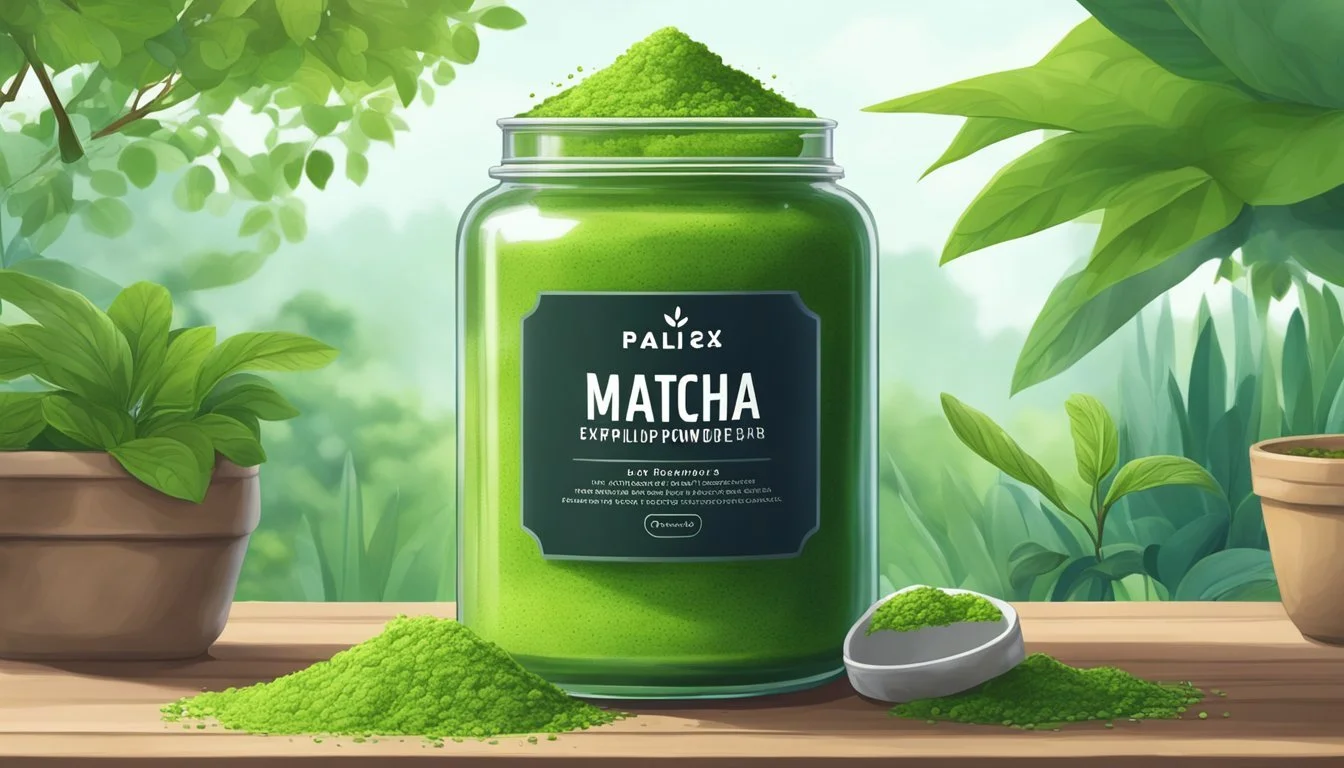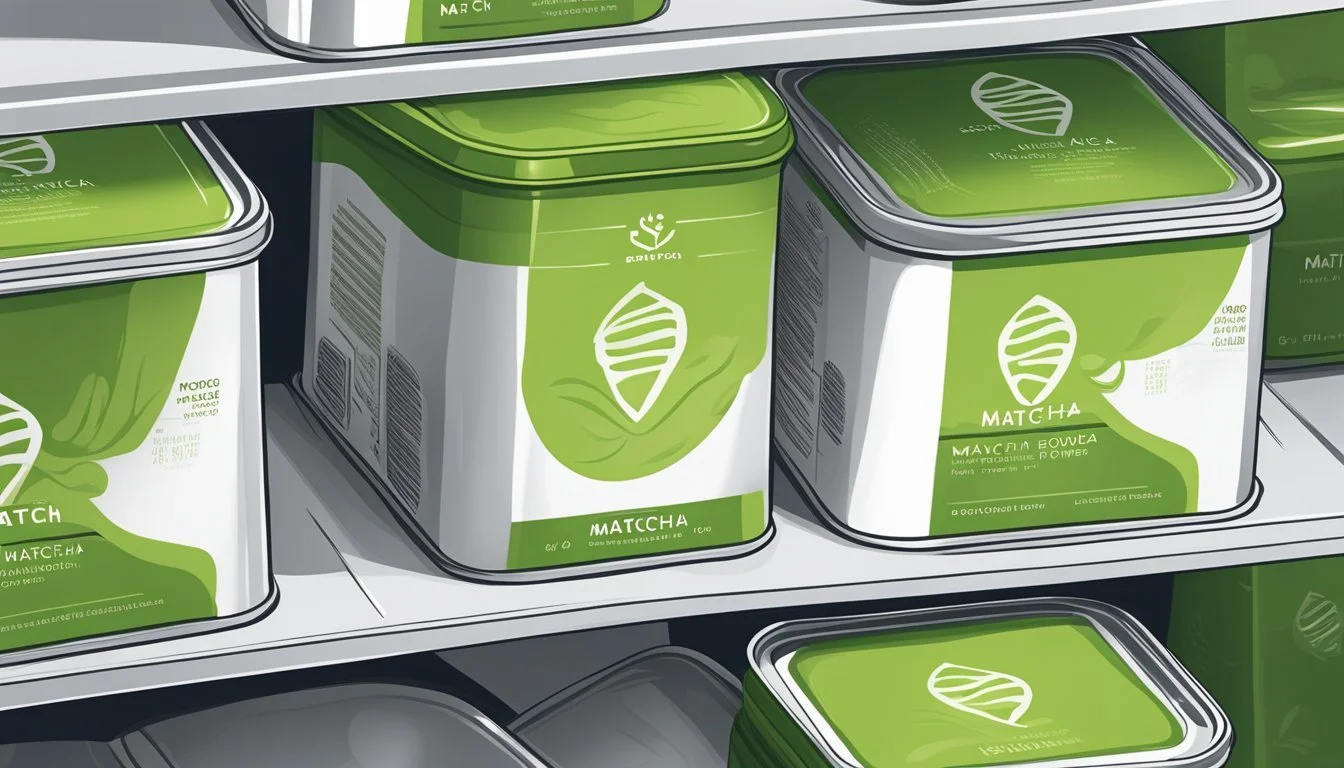How Long Does Matcha Powder Last?
Understanding Its Shelf Life
Matcha powder, a finely ground powder made from specially grown and processed green tea leaves, is renowned for its rich flavor, vibrant green color, and potential health benefits, including high antioxidant content. While matcha has gained popularity in various forms, from traditional tea ceremonies to modern culinary applications, understanding its shelf life is essential for maintaining its quality and benefits.
The shelf life of matcha powder is generally placed between one to two years when unopened and stored correctly. However, once opened, its freshness is best preserved for one to two months. To enjoy matcha at its peak quality with all the associated health benefits intact, proper storage is key. Matcha enthusiasts should store the powder in a cool, dark place, away from direct sunlight and moisture, to prevent degradation of its delicate compounds.
Understanding Matcha Powder
Matcha powder, derived from specially grown and processed green tea leaves, is celebrated for its rich nutrients and versatility in culinary uses.
Origins and Types of Matcha
Matcha hails from Japan, where it plays a central role in the traditional tea ceremony. There are two primary types of matcha: ceremonial grade and culinary grade. Ceremonial matcha is the highest quality, often organic, and intended for drinking, while culinary matcha is used for cooking and baking, and is often mixed into lattes, smoothies, and baked goods like pancakes, crepes, and waffles.
Health Benefits and Nutrients
Matcha is lauded for its health benefits due to a high concentration of beneficial compounds. It is rich in antioxidants, including catechins that promote health, and chlorophyll, which gives it a vibrant green color. Matcha contains caffeine, offering a sustained energy boost without the typical jitteriness associated with coffee.
Nutrient Benefit Antioxidants Combat oxidative stress Catechins Support heart and skin health Chlorophyll Detoxifying properties Caffeine Enhances alertness and concentration
Culinary Uses of Matcha
Matcha's unique flavor profile – a balance of umami and subtle bitterness – makes it a favorite in various culinary applications. In addition to traditional tea, it's popular in modern recipes for smoothies, lattes, ice cream, and custards (how long do custards last?). Matcha imparts a distinct flavor and color to baked goods, offering both aesthetic and nutritional enhancements to everyday cooking.
Factors Affecting Matcha Shelf Life
Matcha powder's shelf life is significantly influenced by its exposure to oxygen, moisture, light, and varying temperatures. How one stores matcha can either preserve its freshness and vibrant green color or lead to quicker degradation.
Impact of Oxygen and Moisture
Oxygen exposure leads to oxidation, which can degrade the quality of matcha powder, dulling its green color and flavor. Moisture is another enemy of matcha; it can potentially introduce mold and affect the powder's texture. It's important to keep matcha in an airtight container in a dry environment to minimize these risks.
Effects of Light and UV Rays
Direct light and UV rays can also compromise the integrity of matcha powder, leading to faded color and reduced quality. The powder should ideally be stored in a dark, opaque container away from direct sunlight to protect it from light-induced degradation.
Temperature and Storage Conditions
Matcha should be kept away from sources of heat and maintained at a stable temperature. Room temperature is typically recommended, but for long-term storage, placing matcha in the fridge or freezer can help retain its quality. When choosing the latter, it is crucial that the powder is sealed properly to prevent it from absorbing flavors and odors. Temperature fluctuations should be avoided as condensation can introduce moisture, which may lead to spoilage.
Proper Storage Solutions
Effective storage solutions can maintain the freshness and extend the shelf life of matcha powder. This involves selecting an appropriate container, understanding the best storage location, and recognizing when matcha has lost its quality.
Choosing the Right Container
One must store matcha powder in an airtight container to protect it from exposure to oxygen, which deteriorates its quality. Glass containers with a tight seal are often recommended. The container should prohibit light, as UV rays can degrade the powder and reduce its potency.
Storing Matcha in Pantry, Fridge, or Freezer
Pantry: A cool, dark pantry is suitable for unopened matcha powder. Once opened, it's best to store matcha powder in the refrigerator to keep it fresh longer.
Fridge: When refrigerated, matcha should be in an airtight container to prevent moisture and other food odors from affecting its flavor and aroma.
Freezer: For long-term storage, matcha can be frozen. However, ensure it's in an airtight container to prevent condensation and freezer burn.
Signs of Stale or Expired Matcha
Matcha that has become stale or expired will exhibit:
Taste: A noticeable decline in flavor, possibly becoming more bitter.
Aroma: A less vibrant or almost absent scent.
Texture: A change in color from vibrant green to dull and a clumpy texture.
Potency: A decrease in the health benefits it is known to provide.
The expiration date on the package can guide the expected shelf life, but the actual freshness also depends on how the matcha powder is stored.
Determining Matcha Powder’s Shelf Life
Matcha powder's lifespan depends heavily on its production date and on whether the package has been opened. The following breakdown helps understand the key factors affecting shelf life and highlights how to determine the freshness of matcha.
Reading Labels and Production Dates
Manufacturers typically print a production date or an expiration date on matcha powder packaging. The shelf life of matcha often ranges from 1 to 2 years from this date, assuming the product is stored under ideal conditions. Consumers should look for the "best by" date or a similar indicator to ascertain the expiry timeframe. It's imperative that one checks these labels to get an accurate idea of how long the matcha will retain its optimal quality.
Freshness of Opened vs. Unopened Powder
Unopened Matcha Powder: When sealed in its original packaging, matcha powder maintains its quality for 6 to 12 months. A properly stored, unopened packet can surpass this range, but for best freshness, consumption within this time is advised.
Opened Matcha Powder: After opening, matcha should ideally be used within 4 to 5 months. Exposure to air reduces its quality over time, so storing the matcha in an airtight container is crucial to maintaining freshness. A significant decline in matcha's vibrant green color or a change in aroma may signal that the powder has aged beyond its prime.
By keeping a close eye on this information, individuals can enjoy their matcha with the confidence that it is fresh and at its best quality.
Innovative Uses of Expired Matcha
When Matcha powder is past its prime for consumption, it still holds value in inventive applications across non-edible products and in household or gardening efforts.
Matcha in Non-Edible Products
Expired Matcha can be a potent addition to DIY skincare items, harnessing its antioxidant properties. It can be incorporated into:
Face masks: By mixing the expired Matcha powder with ingredients like honey or yogurt, one can create a natural, nourishing face mask.
Body scrubs: Combining the powder with a base like coconut oil and sugar to exfoliate and rejuvenate the skin.
Repurposing for Household and Gardening
In the household and garden, Matcha can contribute positively despite its expiration:
Compost Enhancer: Adding Matcha to a compost pile introduces beneficial nutrients, which eventually enrich garden soil.
Natural Dye: Clothing or paper crafts can gain a unique green hue when using expired Matcha as a natural dye.
For gardening, expired Matcha can be mixed into the soil as a supplement, providing plants with minerals and potentially aiding in pH balance.
FAQs on Matcha Preservation
This section addresses common questions about preserving matcha and maintaining its quality for both culinary and beverage purposes.
Can Matcha Be Used in Baking Recipes?
Matcha can, in fact, be used in a variety of baking recipes, imparting a distinctive green hue and a subtle tea flavor to cakes, cookies, and pastries. It is important to ensure that the matcha is fresh to maintain the desired taste and color intensity in the final baked product.
How to Tell if Matcha Has Gone Bad?
It is necessary to identify signs of spoilage in matcha to ensure its quality and safety:
Color: Fresh matcha will have a vivid green color. If the powder appears dull or has yellowed, it has likely degraded.
Smell: Matcha should have a fresh, grassy aroma. A stale or unpleasant odor indicates it is no longer good to use.
Texture: Clumping beyond what can be sifted may be a sign of moisture, which could lead to mold.
Molds: If molds or any other growths are visible, discard the matcha for safety reasons.
To conclude, vigilance in the storage and handling of matcha can help maintain its freshness, giving you optimal flavor for both beverages and baking recipes.






